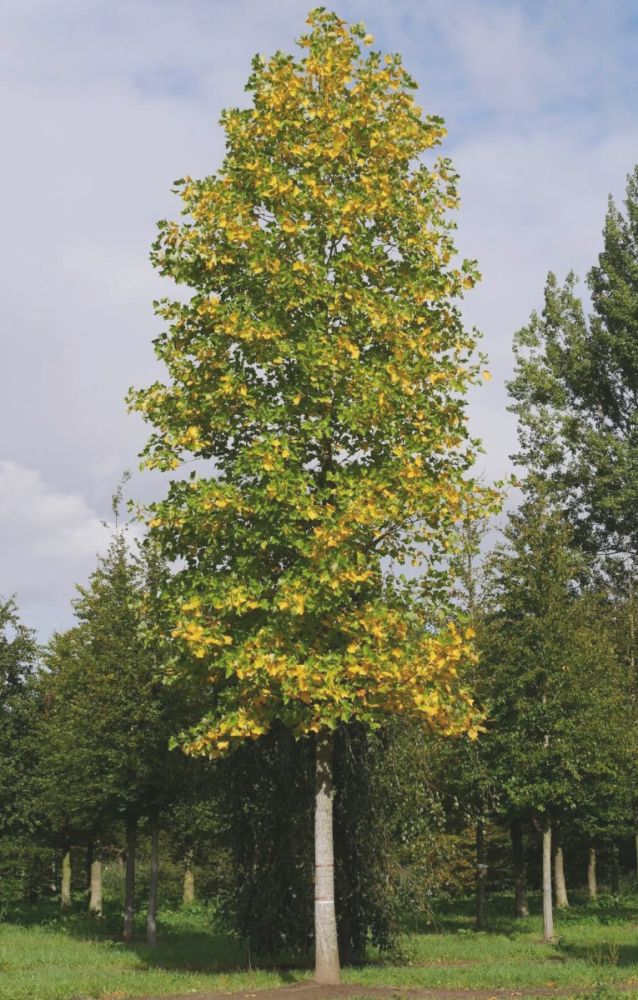Tulip Tree - Liriodendron
Tulip Tree (Liriodendron tulipifera) — a fast-growing, impressive tree known for its large, tulip-like yellow-green flowers with an orange base and distinctive four-lobed leaves. It thrives in sunny, fertile soils and adapts well to urban conditions, playing an important role in air purification and soil stabilization. Notable specimens, such as the 245-year-old tree in Sochi, are celebrated as natural monuments.
Tulip Tree (Liriodendron tulipifera) — a majestic and fast-growing tree that can reach impressive heights of 30-50 meters. It is distinguished by its tall, straight trunk, broad crown, and unique four-lobed leaves resembling the shape of tulips. The tree is named for its large, bright yellow-green flowers with an orange base that bloom in late spring and resemble tulips. These blooms attract pollinators and add significant decorative value.
Natural Range and Cultivation: The native range of the Tulip Tree covers the eastern regions of North America, but it is also cultivated in Europe and other parts of the world due to its beauty and rapid growth. The tree prefers sunny locations and moist, well-drained, fertile soils with a neutral or slightly acidic pH. It can thrive in park settings as well as urban areas, where it is used for landscaping and creating avenues.
Ecological Role and Resilience: The Tulip Tree plays an important role in ecosystems by improving air quality and stabilizing soil. It tolerates moderate air pollution, making it suitable for urban planting. Its strong and extensive root system helps to reinforce the soil. The tree can also form mycorrhizal associations with certain types of fungi, enhancing nutrient uptake and contributing to ecosystem health.
Growth and Flowering: The Tulip Tree grows quickly, especially in its early decades. It flowers in late spring or early summer, with its blooms attracting bees and other pollinators, providing an additional source of nectar.
Interesting Facts: The Tulip Tree can reach impressive sizes, and in many cities, large specimens have been designated as natural monuments and tourist attractions. For example, in Sochi, there is a 245-year-old Tulip Tree, and other giant specimens are found in Krasnodar, Gelendzhik, and Crimea. The unique shape of the leaves and flowers makes it a favorite among pollinating insects. Its rapid growth and adaptability have made it a popular choice for landscaping large areas and gardens.
Economic Value: The wood of the Tulip Tree is valued for its lightness and workability, making it popular in construction, furniture making, and carpentry. It has a smooth texture and light color and is easy to work with.


